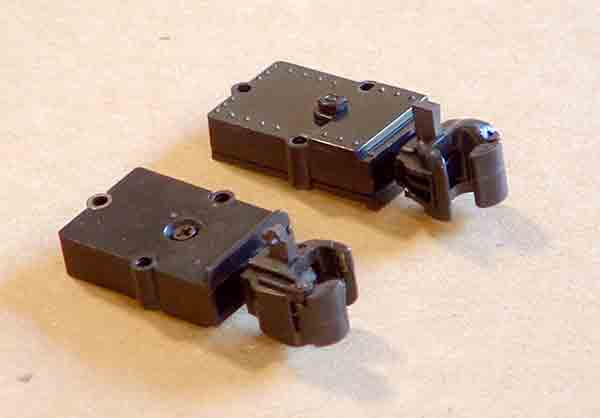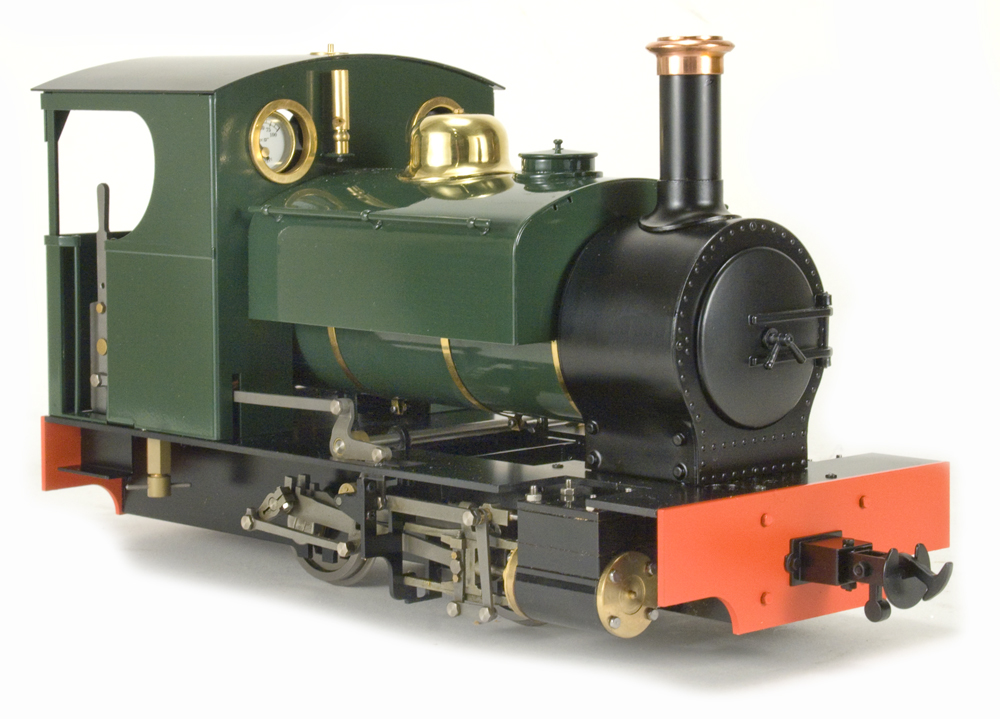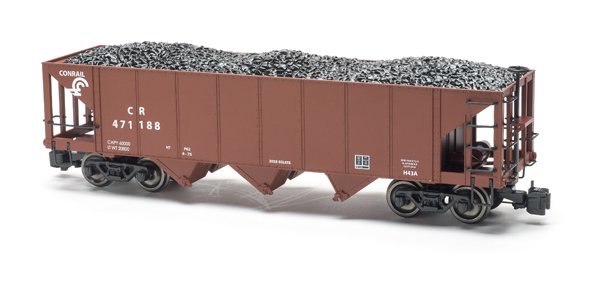Vital statistics
1:32 scale, working knuckle couplers
American Model Supply
33268 Central Avenue
Union City CA 94587
Price: $10/pair
Web site: www.amstrains.com
Working knuckle couplers and sprung draft-gear boxes for 1:32 scale
Pros: Prototypical, working drop pin; Kadee #1-scale #820/920 mounting-hole compatibility; perfect size for 1:20.3 cars using three-quarter-size couplers
Cons: Slightly oversize for 1:32 scale
AMS uses the same size draft-gear box and mounting holes that Kadee used for its #820 and #920 couplers, so AMS’s will retrofit without any modification to the model’s frame. The couplers also mount directly to MTH 1:32-scale cars, as MTH supplies their cars and engines Kadee-coupler ready. The #820/920 draft-gear box is oversize but allows the couplers to work on radii as small as four feet when body mounted. A smaller, correct-size draft-gear box, like Kadee’s #821/921 would also be a good option for the AMS couplers. The minimum radius would then be about six feet but much of the available Nº 1-scale equipment available today has a minimum radius of 10 feet anyway.
The couplers are mechanical and have working drop pins. The samples I reviewed worked fine, and the pin has a hole at the top through which a .031″ cut lever could be attached. The drop pin makes for a more realistic coupler, representing a full-size coupler, and is easier to uncouple by hand than Kadee’s. Coupling is a bit more involved because the coupler must be in the open position but that’s how full-size couplers work. On the whole, I liked the ease of use of the coupler, especially in switching operations.
Air hoses would need to be added to a car, something I never bother with using Kadees. In fact, the trip pins on Kadee’s couplers look more realistic (using the 10-foot rule) as a train goes by. Air hoses that aren’t connected don’t look right in a train, although they look great on a single display car.
My only criticism is that the AMS coupler is, overall, too large for 1:32 scale. It’s even larger than Kadee’s Nº 1-scale couplers, which are also slightly oversize. A type-E coupler (industry standard, introduced in 1932) is 1417/64″ wide. A survey of couplers on mid-20th-century locomotives and cars show two different size ranges: 133/8″ to 141/2″ (type-E size) and 163/8″ to 165/8″ (later AAR versions). The AMS coupler scales out at 1725/32″ wide, too large by about 25% or 7% (depending on the prototype chosen for comparison). I suspect it may have been designed for 1:20.3 scale. Railroads such as the Southern Pacific used 3/4-size couplers on their three-foot-gauge equipment. That would be about 103/4″ (101/8″ to 115/8″, as measured on SP narrow-gauge cars). The AMS coupler in 1:20.3 scale is 115/16″, within the range.
Overall, I do like this coupler, especially for operating railroads. I hope that AMS will come out with a smaller version, with draft-gear box, for 1:32 in the future.














